June 18, 2013. The anniversary of my father’s birth. A Red Flag day, according to KNAU, with hot temperatures, fierce winds, ridiculously low humidity. Fire weather, just needing a source of ignition.
At noon I noticed a plume of smoke to the west and knew this was no “controlled burn.” Grabbing cameras and a hat, I jumped in the Subaru and headed for Iron Springs Road, only to be turned back as soon as I got out of town. The fire had started at Dosie Pit Road and had jumped the highway, heading for Granite Mountain. OK, my vantage point would have to be over near Williamson Valley Road. I could get up high on a ridge above a housing development to the west of Granite Mountain, and the view should be good there.
Sure enough, Little Granite Mountain was smoking as if she were a volcano, and a towering column of smoke curved over Granite Mountain, casting a strange orange light on its rocks. A helicopter arrived, hovering over Granite Basin Lake as it dipped buckets of water to drop on the fiery leviathan. Like spitting into a roaring bonfire, I thought.
Many images later, I was ready for a new perspective, so I headed west on Williamson Valley Road, hung a left onto Fair Oaks, then took Tonto Road, thinking that I could get around on the lee side of the fire to see where it started. However, where Tonto turns to gravel, “road closed” signs blocked my passage. So I took some shots, turned around, and headed back to Williamson Valley, where views of the fire as it came over the saddle heading north were awesome.
There are a lot of houses scattered around in the scenic landscapes around Inscription Canyon and Mint Wash Ranches. Some are modest “get-away-from-it all” dwellings built long ago, but fancy houses on paved streets have sprung up around or near them. The views are incredible, but the flammability factor, except where penned horses have stripped everything to the dust, is high.
Though still some distance away, the fire was sweeping down the mountainside like a hungry dragon. Through my telephoto lens, I watched tall pines go up like giant candles. Smoke billowed in the high winds, heading toward Sedona.
I left my car in a safe place well off the road (unlike the rubberneckers pulling half-off the pavement, possibly endangering themselves or emergency vehicles coming through) and walked back through smoke-filled air into the ranchettes and homes with gorgeous views of Granite Mountain–normally. Now the dragon of fire was sweeping toward them, and people were hauling out trailers filled with horses none too happy about the situation. Turkeys gobbled in distress–would they get the same treatment?
Fire trucks and sheriff vehicles prowled the neighborhood, lights flashing. No one seemed to know where to position to be ready in case the fire left the peak and roared into the development. A pillar of smoke–orange and gray battling for supremacy–towered over the land.
Now tongues of flames licked above the trees and rocks at the foot of the mountain. All our human resources seemed puny in comparison to the fury of this inferno.
Granite Mountain, icon of this area, going up in flames because of the carelessness or neglect of someone far away on the Dosie Pit Road, where people discard junk and blast it with guns of all kinds. Fire people write the name as the Doce Fire, apparently unaware of its spelling and the fact that “doce” is Spanish for “twelve.”
To try to prevent the advancing fire from reaching the homes and ranchettes in Williamson Valley, there is an aerial assault of tanker planes and helicopters. The former swoop in low along the margin of the fire and drop red retardant. Some of the helicopters are Chinooks, bringing me back to my days in Vietnam. In fact, it’s easy to see the parallels with war here, and getting too close to the “enemy” is no less dangerous for the pilots.
The effects of the fire extend far from the flames themselves. Smoke blows far to the north, and those of us close to the fire are inhaling the residue of the pines, oaks, junipers, mountain mahoganies, and countless other victims of the firestorm. Adult birds can move away from the fire, though nestlings can’t. Some creatures will survive if deep enough underground, though the landscape to which they will emerge will no longer offer the cover or food they may need to survive.
Tree-ring studies show that prior to Anglo settlement, the fire-return interval may have been as short as every 3 – 10 years. This kept the fuel load light so that the fires were much less destructive. Logging, grazing, and active fire suppression all have contributed to the unnatural condition of the forest and scrublands here. Drought and warming have made the standing crop of plants all the more vulnerable. The tinderbox was awaiting the spark, and foolish people provided it. This fire will burn for days, and its impacts will be felt for years. Local fire ecologists (of which there are very few) will have an active research site, and perhaps, just perhaps, local land managers will take lessons from the fire and reach a public somewhat more likely to listen.
Until then, we watch in awe at the power of nature or, if our jobs and/or skills require, we fight this beast actively. Of course, the beast is really us; we have failed to accommodate to nature either through ignorance or hubris (often both). The increase in large, destructive fires in recent years is perhaps just a sign of the “new normal.” We are lucky to live in a beautiful part of the world, but it is really elementary that we should pay attention to the elements. Earth, air, fire, and water set constraints that we ignore to our peril.

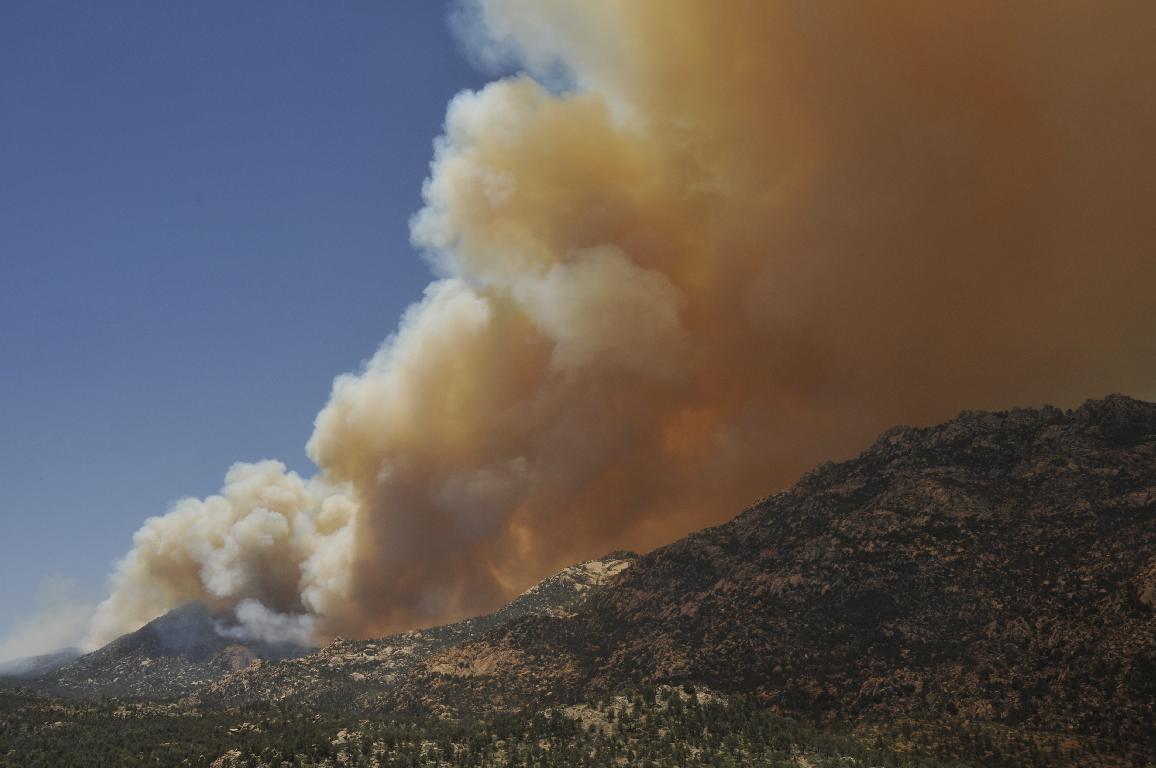
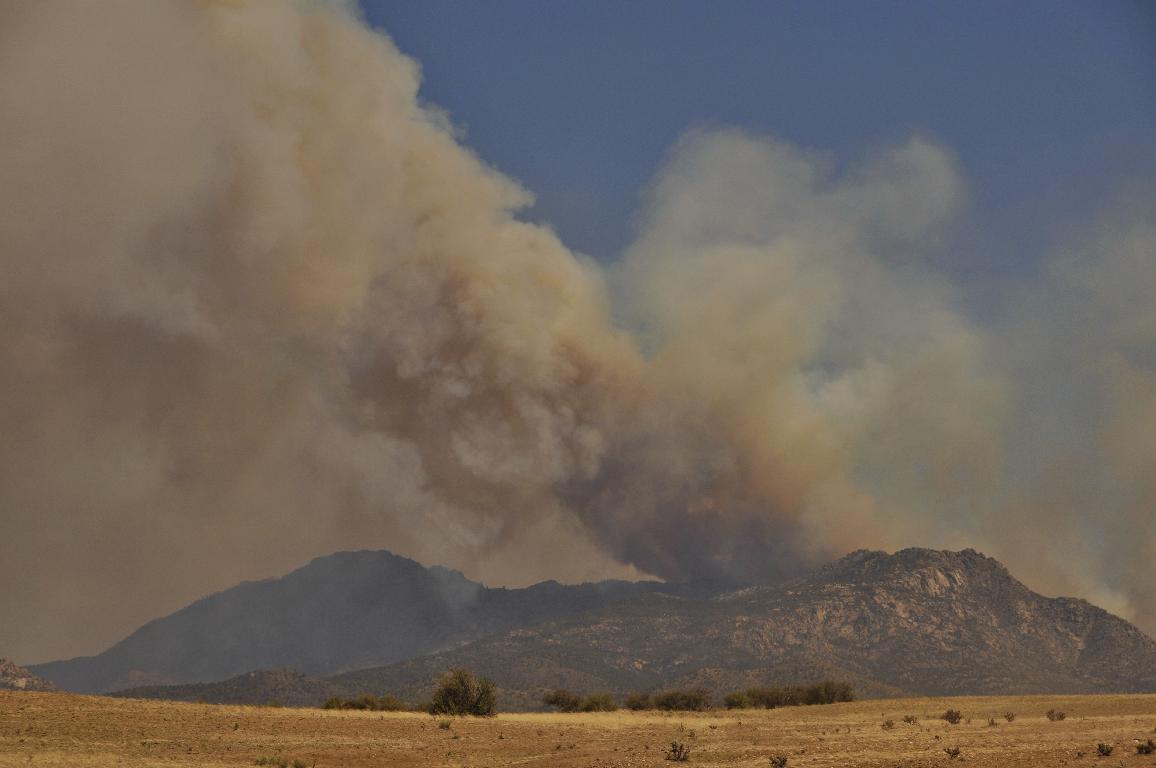
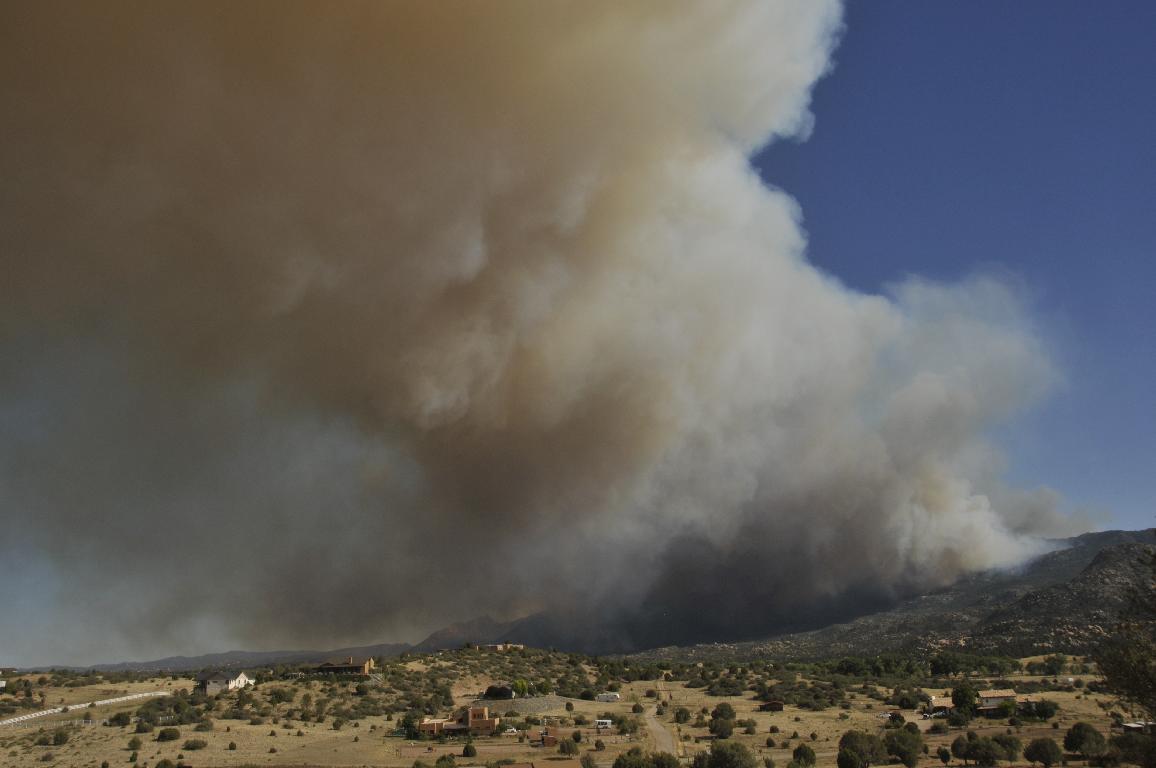
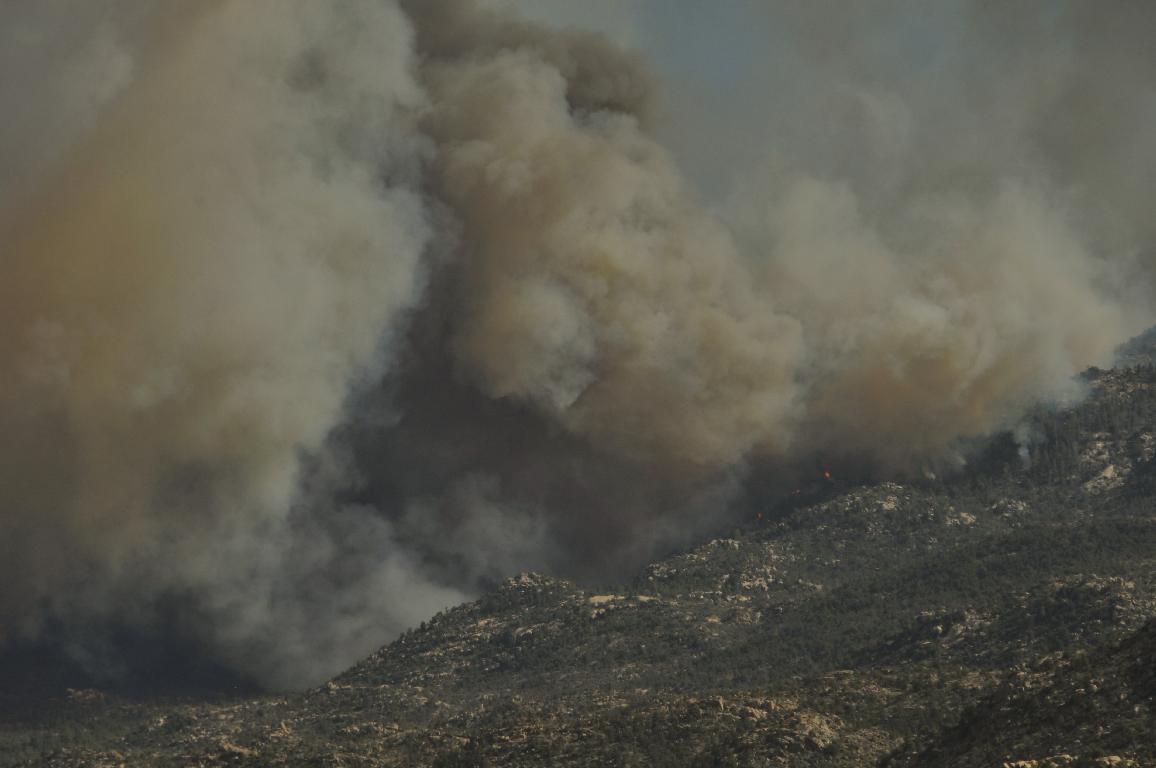
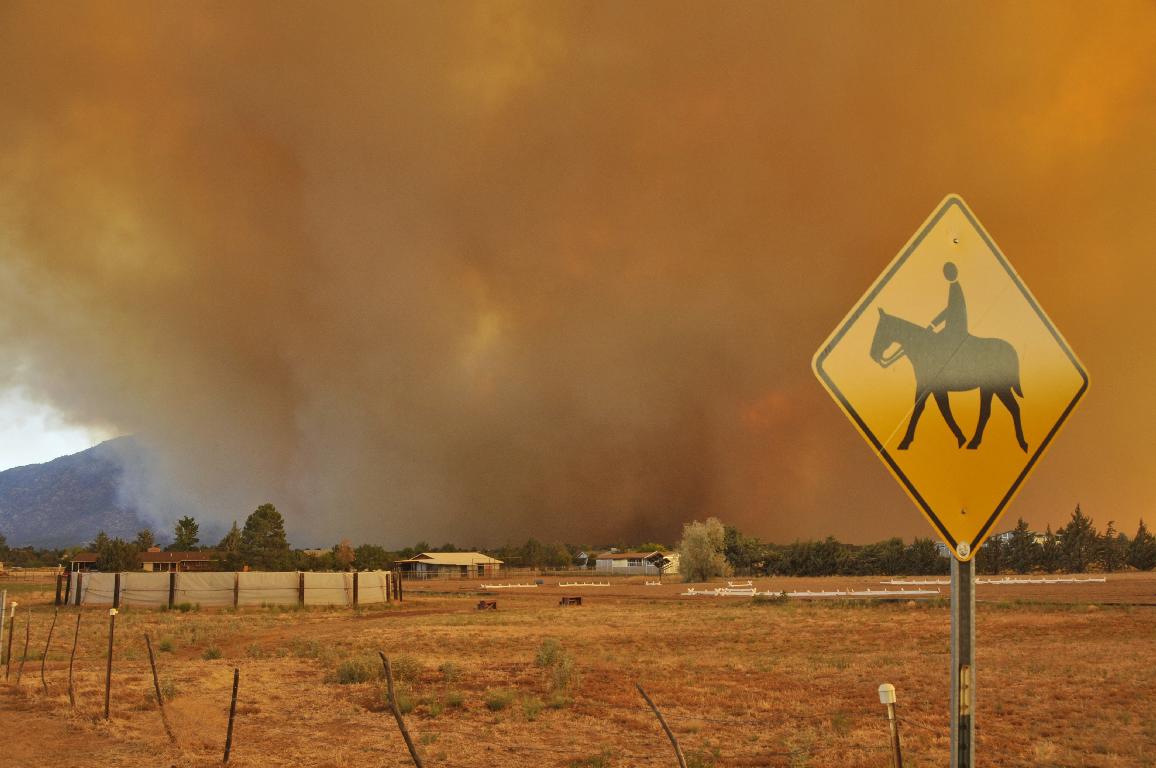
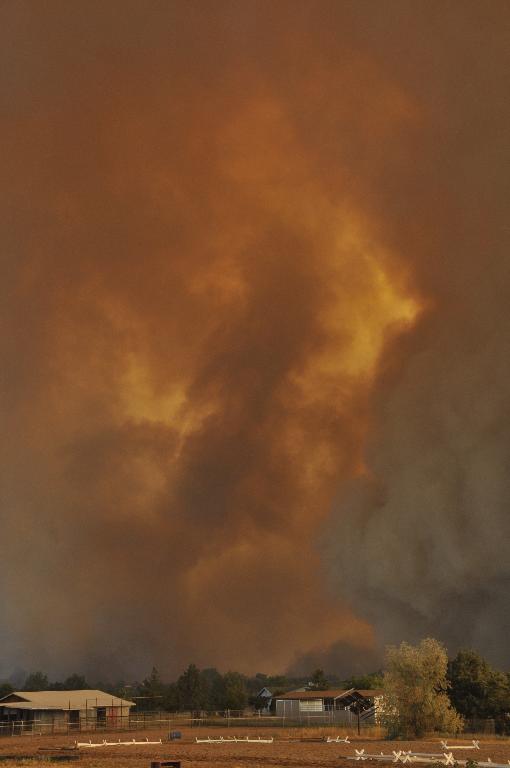
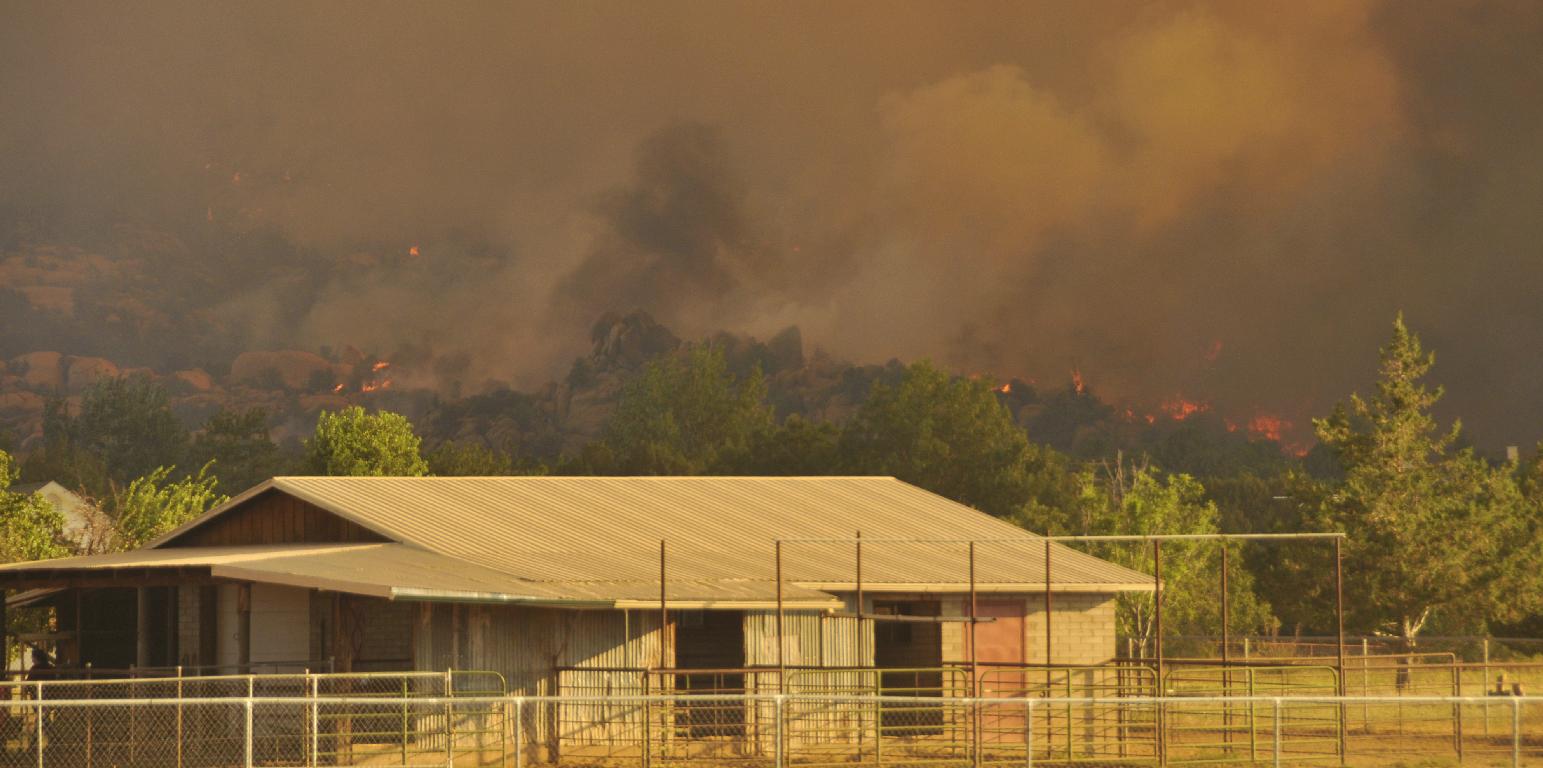

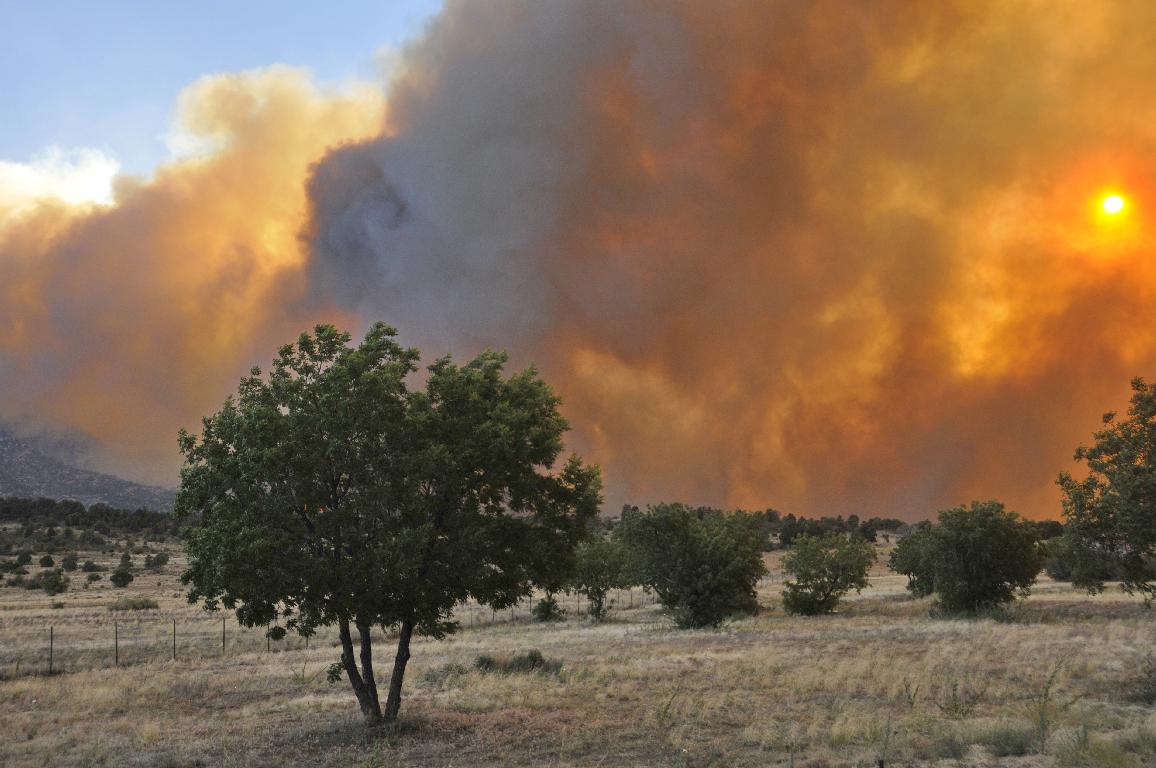
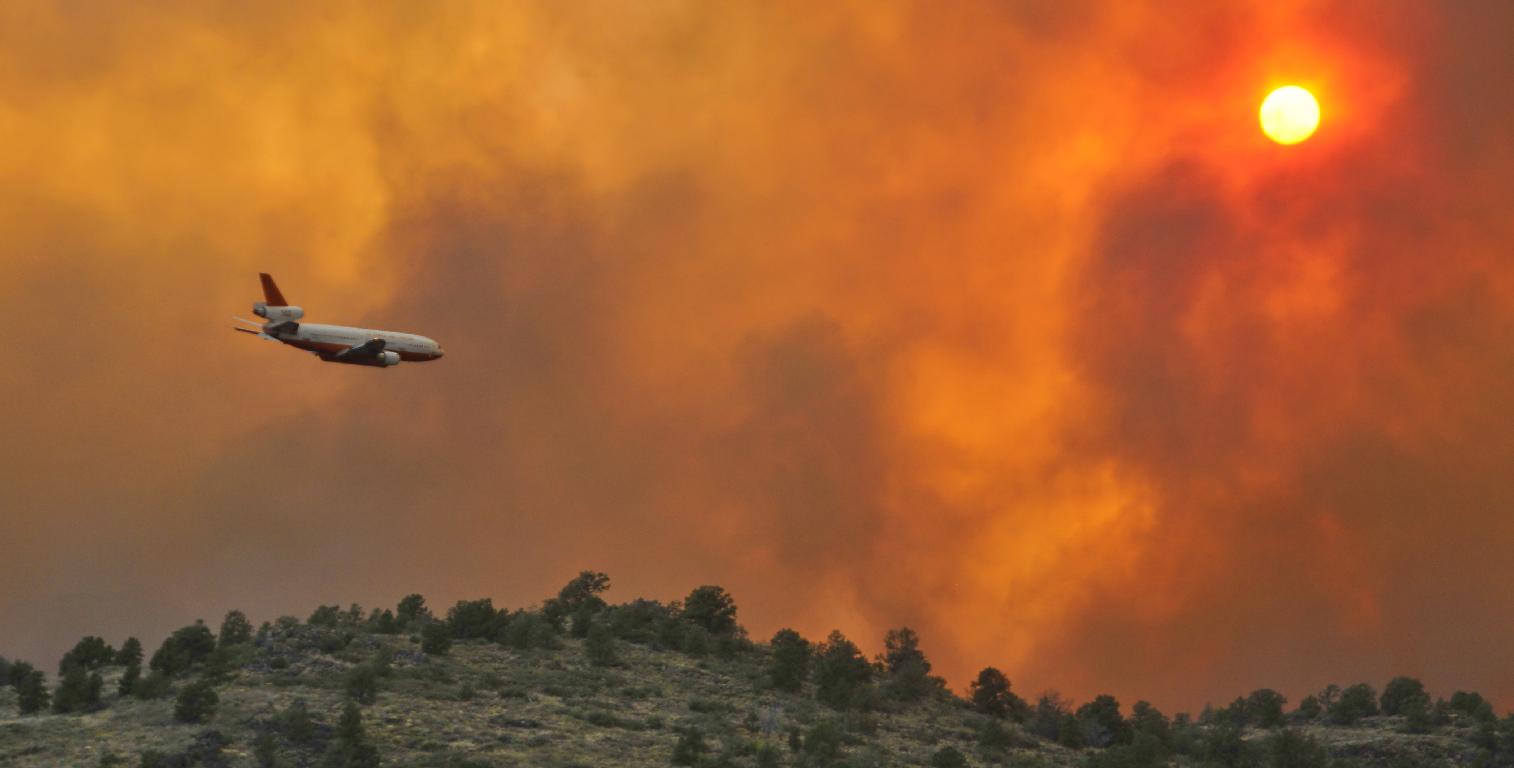


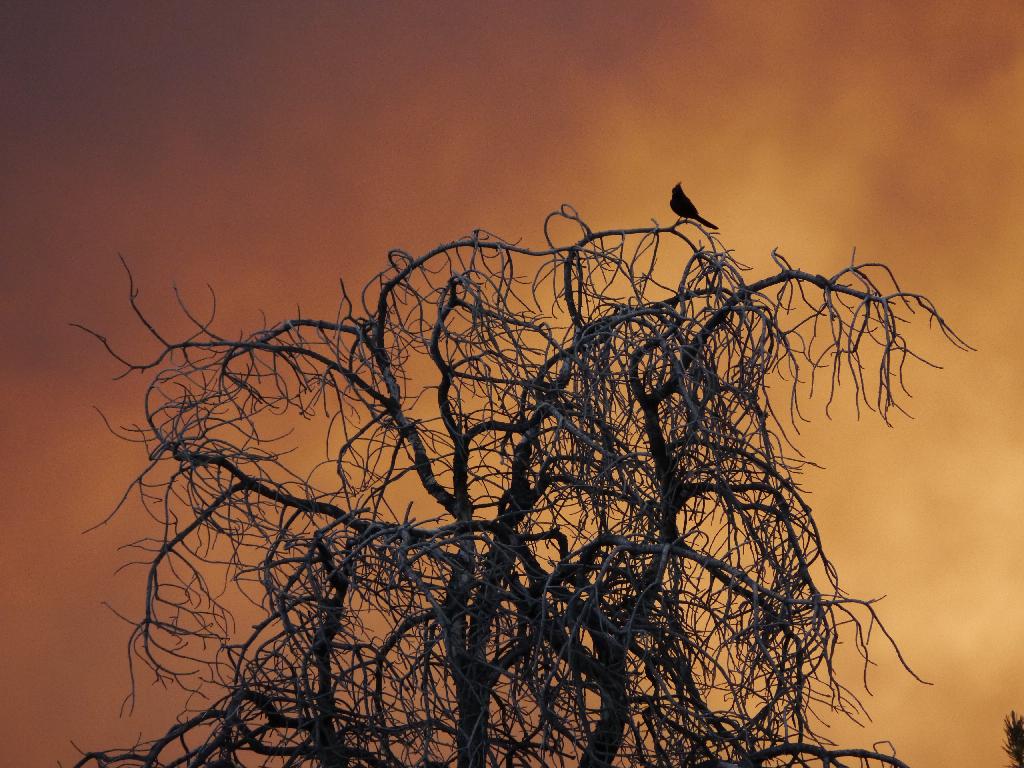
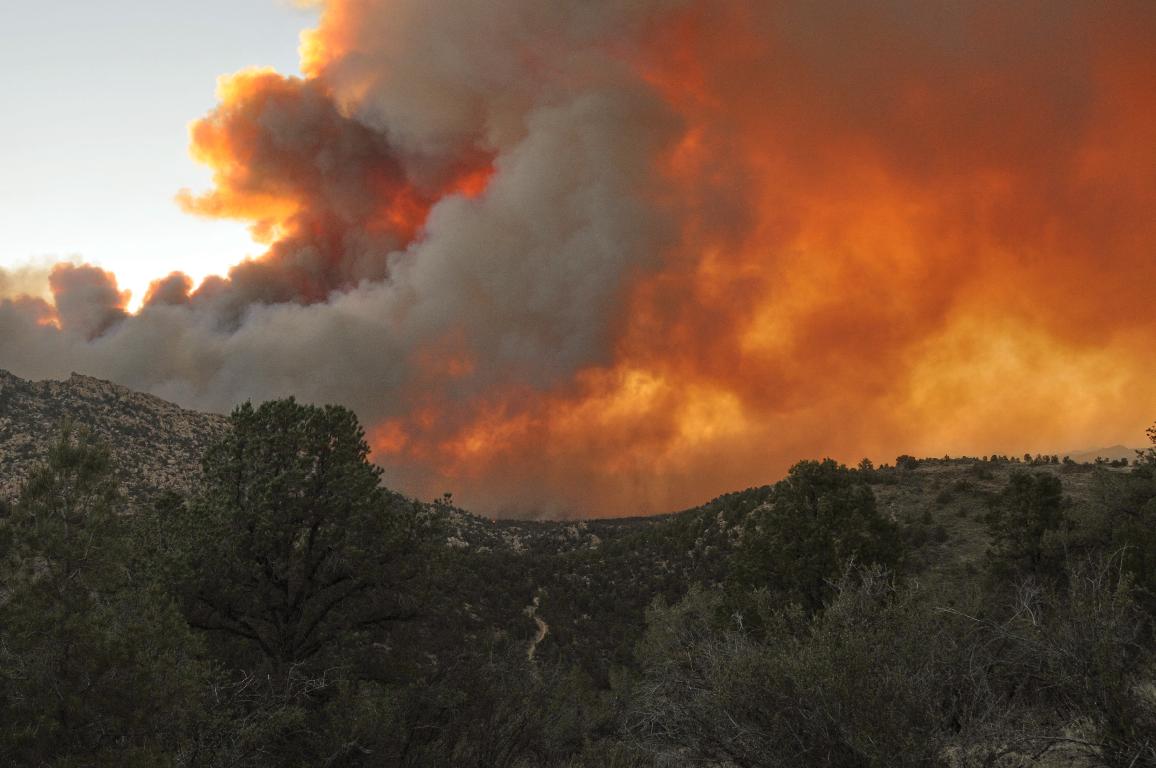
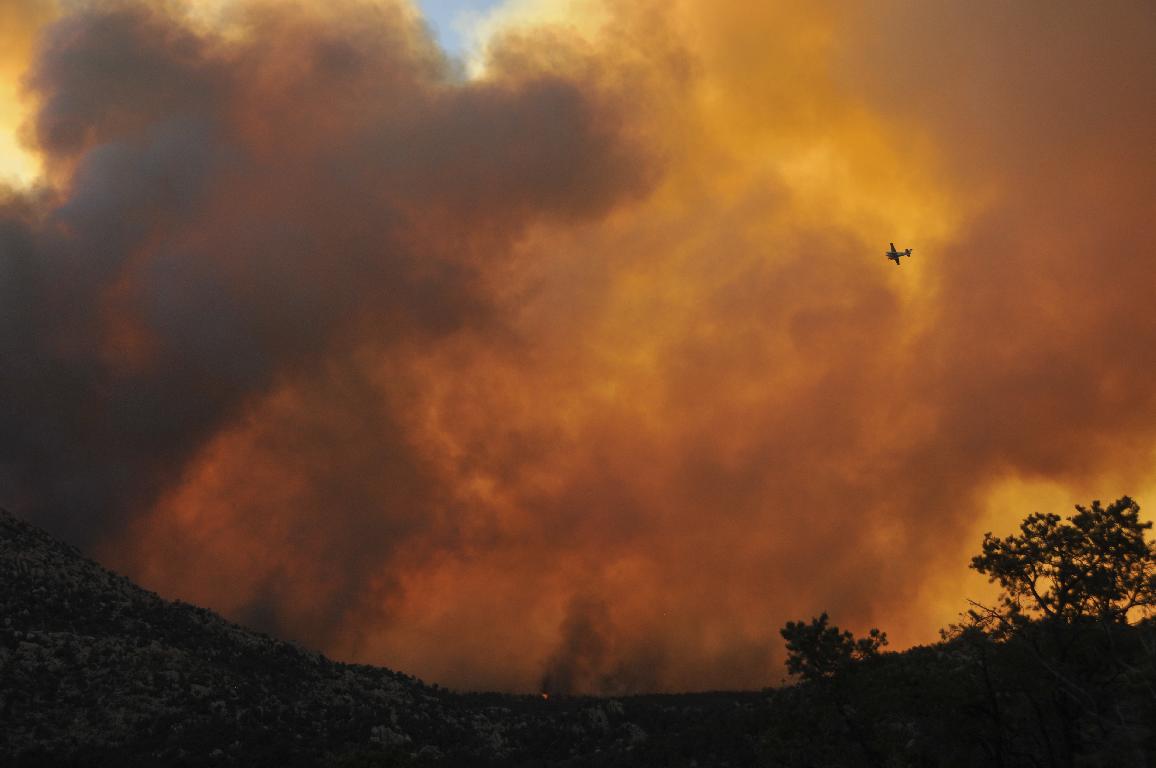
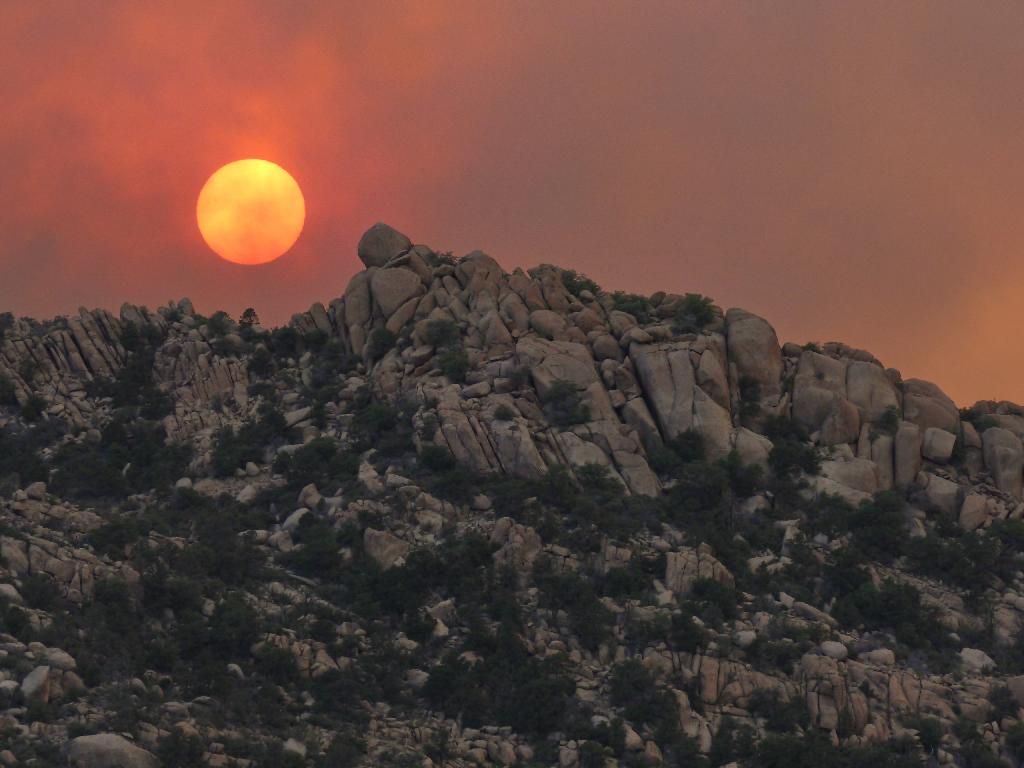
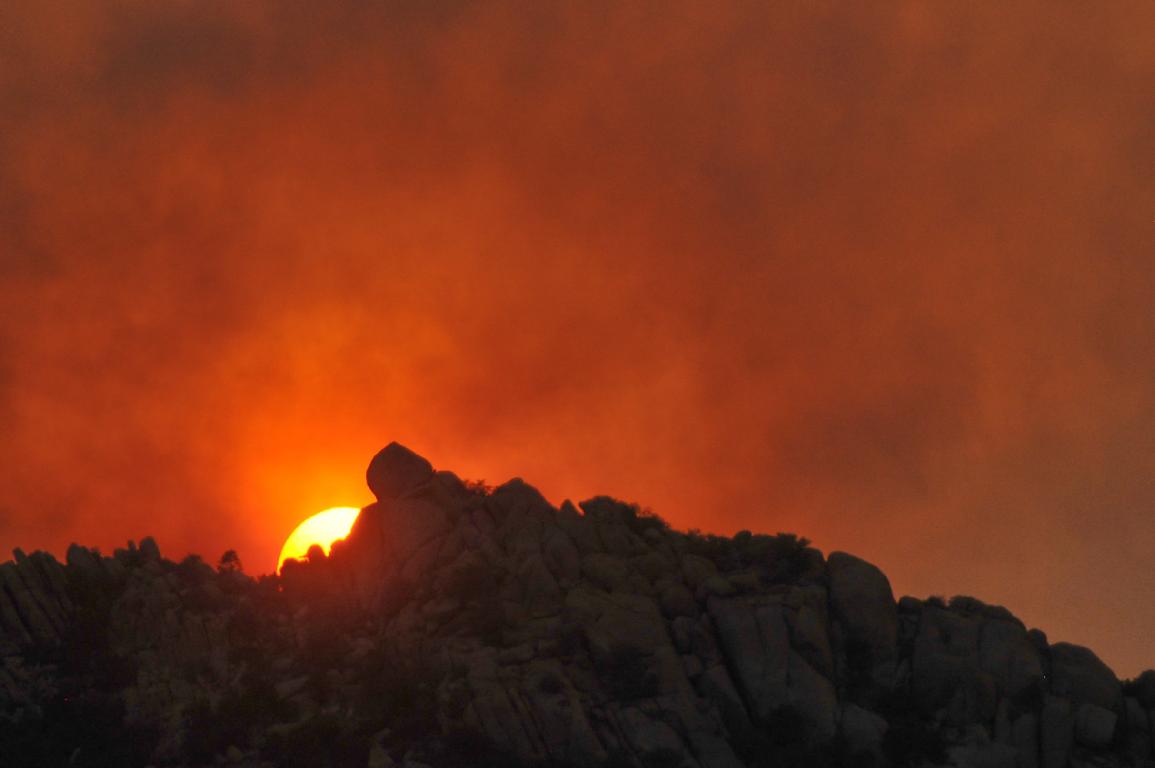
Great coverage of the infernal, Walt, I’ve been wondering how close you were to the fires, hardly imagining you’d be chasing after, so to speak. Also enjoyed your blog on the recent Chiricahua fires, and of course always your superb commentary on ecological implications. Great photos, well done!
Thanks, Robert. I am very respectful of the needs of emergency crews and local residents, so I mostly worked from a distance with telephoto lenses, but in the case of some of the amazing scenes of the fire clouds, I could use wide angle lenses simply because of the enormous scale of the smoke. Yes, there are so many ecological lessons to learn. It is so important to pay attention, become informed, and truly care. Thanks for reading and sharing.
Wonderful photos of an unfortunate reality. It brings me back to our Interpreting Nature through Art and Photography class. I hope the emergency crews are able to do their work safely and the natural world is able to rectify as it needs as well.
Thank you for covering the fire. I am able to feel the impact all the way from Boston.
That’s right, Natalie. We covered the Indian Fire in that Interpreting Nature class and discussed how the forest we see is really a mirage, an illusion that we have created through mismanagement. The eastern forests are a far cry from what they used to be too, thanks to the over-harvest of Eastern White Pines and Passenger Pigeons and diseases like Dutch Elm. But, as we said, “Life Goes On!”
Thank you for this, Walt. These photos are amazing!
Thanks, Charissa. I knew this was an exceptional occasion, so I dropped everything to witness and record.
Walt… great to find your website here! The photos are beautiful… though tragic. It makes me miss Prescott and the landscape there I so love. I’m now in New Mexico and we’ve seen our share of fires this year too. It’s hard to see so many beautiful things drying up and burning… but you have captured such gorgeous moments. The power of nature never ceases to amaze….
Hi, Angie. Good to hear from you. Yes, “Nature’s awesome fury,” as Rob Hunt likes to call it, can indeed be beautiful even when deadly. Think of a major hurricane as viewed from space or a tornado careening across the landscape. Even human evils can have their taste of beauty, as you discovered in the slave castles in Ghana. What an amazing experience you must have had! Your blog contains some beautiful writing.
Walt,
Thanks for documenting this for us. Has the fire reached the largest Alligator Juniper near White Rock Tank?
Hi, Ben. I heard yesterday that it was spared, one miracle in a sea of disaster.
Thank you Walt. Your thoughtful reflections and artful photographs are a much better way for me to share what it was like on Tuesday as we drove away from our home in Sundown Acres, than the accounts on available on the news sites. It will be fascinating to observe the rebirth of the vegetation on Granite Mountain over the next decade but it will also be disturbing to see the devastation the fire has caused.
Yes, the standard media are pathetic, I’m afraid. I’ve been thinking about you and hoping that you are coping with your displacement well. It can’t be easy. Maybe I’ll see you at Jack’s place tonight.
Thank you Walt for this wonderful article. It was so frightening as we live in Inscription Canyon Ranch and watched everyday! The photos are awesome (I can say that now that the threat is over) and I enjoyed your rendition of the scenario!
I had not visited your neighborhood until I was looking for vantage points on the fire. You have a wonderful setting, and you certainly have reason to fear fire should it come through.
Walt, thanks for the pictures and reporting of the fires near where you live. I remember that mountain when we visited you years ago. I loved the 2 pictures of the sun setting behind the mountain. It gave me an eerie feeling of what it was like.
Eerie is an appropriate word!
Thanks so much, Walt!
I was very sad to hear about this. What is the latest on the mountain and its path to recovery (if that’s the right word)?
Hi, Drew. It’s too early to see recovery, which will require rain (and we hope not too heavy, as that will accelerate erosion). I suspect some pockets of fire will continue to burn for some time, and those hot spots could cause new ignitions. In many places, the fuel is gone, so the fire will have its options of pathways reduced. “Recovery” is always relative. Scrub oaks and a few other species, if the heat was not too intense, will sprout from their bases (lignotubers), so they’ll get a head start in the succession battle. Manzanitas (both Pointleaf and Pringle) are dead, but their seeds are activated by fire, so they will be replaced eventually by new stock. Some wildflowers, small shrubs (like yerba santa), etc. will do well in the openings. They will decline as other plants overtop them. So nature will do her thing, and some things will thrive, while others decline. My biggest concern right now is potential loss of soil from erosion, since it can take millennia to replace the thin soils we have around here. Poor soils will be constraints for many species, and reduced productivity will be felt throughout the food web.
Hello, Walt, from Yosemite NP. I heard about the fire, and your blog was the first place I went to for information. It breaks my heart to hear that this is happening (happened?). Granite Mountain is my favorite place in the area, and I hike there whenever I need to think something through. Fires like these, while tragic, remind me of the dynamic nature of every place and thing, and help me to accept and surrender to the sadness. Thank you for the beautiful photos and words.
Lisa: We will continue to love Granite Mountain while grieving for the damage caused by a careless or thoughtless human. Keep your beautiful heart intact; there will always be something to love there, and the mountain will win in the long run.
Those are the most impactful images of the Granite Mt. fire I have seen. And your commentary brings up a lot of shared reactions and important considerations. We cannot see the smoke from here, but knowing of all the fires west and southwest of here maintains a quite awe. Probably good news for mountain mahogany lovers. Like the smoke, actinorhizal stock is going up!
Thanks for the blog Walt.
Tim
Good to hear from you, Tim. I appreciate the compliment. Yes, as in all such “disasters,” there are winners and losers. Did you also get to read the previous entry, which goes into more about fires, climate change, and human behavior? It’s at http://www.geolobo.com/?p=401. “Burning Desires and Incendiary Thoughts.” We miss you around here!
Thanks, Walt, amazing photos. Granite Mountain was one of my many stopping grounds from 1951 until 2000 when I retired and it certainly gives me a heavy heart to see a lot of it destroyed. Let’s hope Mother Nature can restore it.
Jake
Congress, AZ
Mother Nature bats last, they say. This fire has stirred the emotions of so many folks who love that mountain. Let’s hope we get some enlightened management out of this. Or at least greater humility!
Excellent word and photo essay about this keystone force. We have so much to learn. Your reflections are powerful. I am sharing this with my network of friends.
Thanks, Cristina. It’s wonderful and humbling to realize how much there still is to learn from nature.
Walt, I was heading to Colorado moments before the Doce fire started and received periodic reports the next few days, and as a long time ardent afficionado of Granite Mountain I share in the emotional devastation that we all feel for the loss of this ecological gem and its leviathan Alligator Juniper groves. I just heard of the loss of the Granite Mountain Hot Shot crew in Yarnell which is impossible to believe, local men whom we all know. Thanks for your great and insightful reporting.
You’re welcome, Richard. I actually ended up at the Yarnell Fire today and will post something soon. Still reeling from the tragedy.